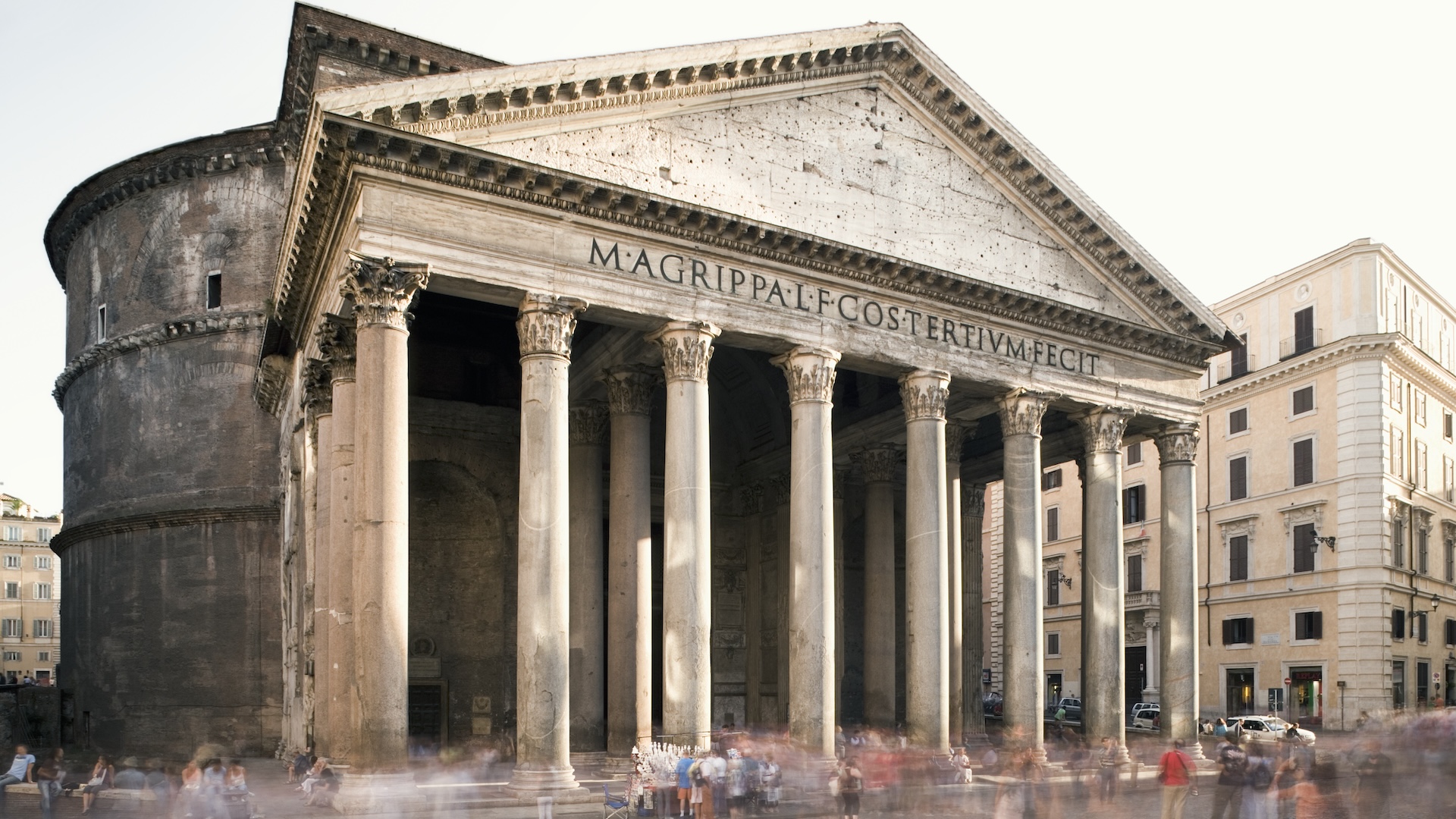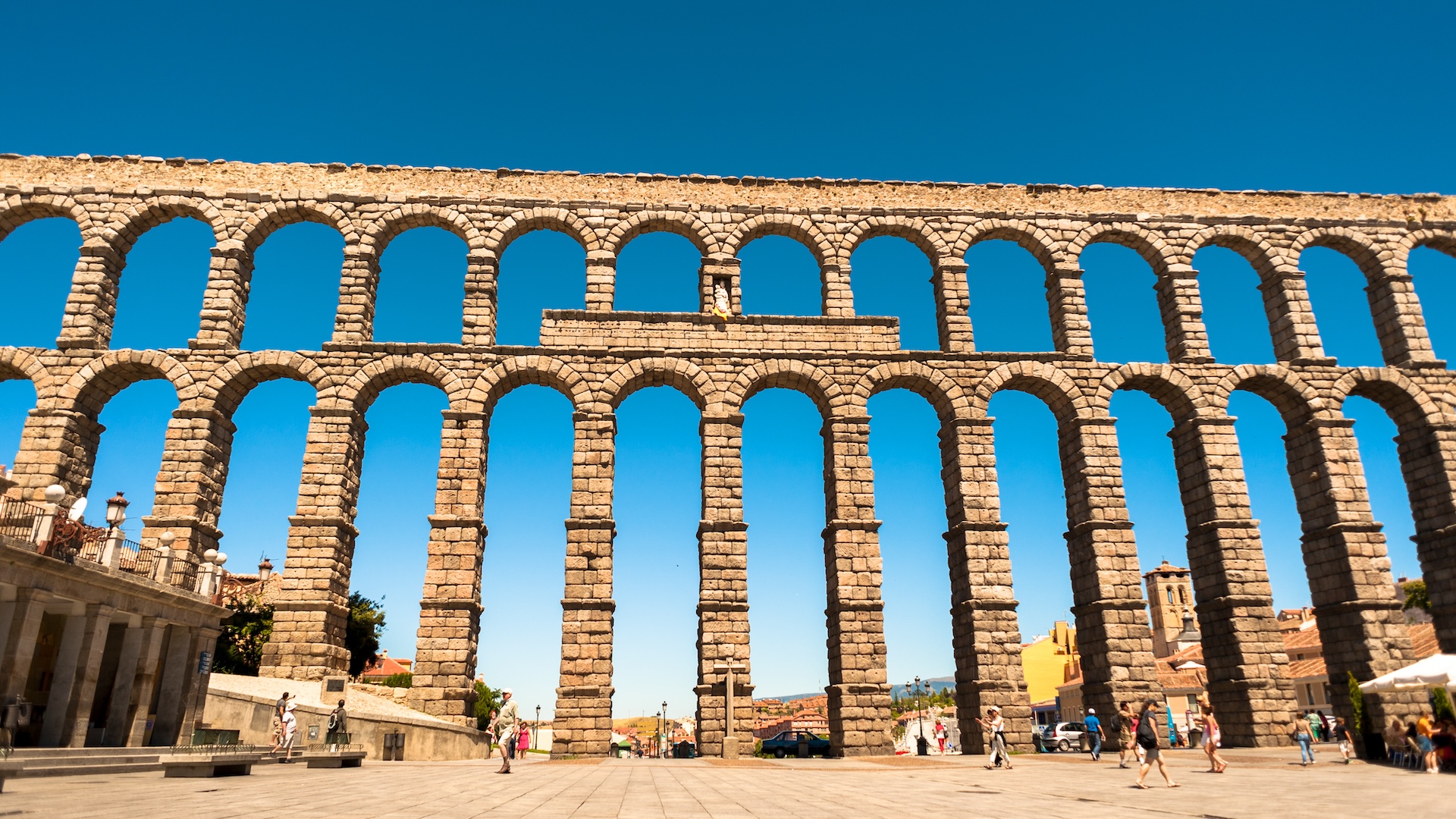How is Roman concrete still standing after 2,000 years?
Roman concrete's durability comes from a combination of its ingredients and production methods.

Nearly two millennia after the height of the Roman Empire, some of its structures are still standing. These marvels have stood the test of time, including the Pantheon in Rome; the Roman aqueducts in Segovia, Spain; and the Roman baths in England.
The longevity of these structures can be attributed largely to Roman concrete. But what makes Roman concrete so special? What is it about this material that has allowed structures to stand for thousands of years?
Researchers still puzzle over exactly how Roman concrete was made, but they have a few clues, including many of its ingredients and that it is self-healing when it rains.
How is concrete made
First, it's important to understand how concrete, in general, is made. Modern concrete begins with cement, which is a fine powder that turns into a paste when mixed with water. A key ingredient in cement is the sedimentary rock limestone, which is largely made of calcium carbonate, a compound also found in the natural world, including in egg and seashells. Limestone gets mixed with other materials, like clay, and then gets heated in a kiln at 2,700 degrees Fahrenheit (1,482 degrees Celsius) to produce a material called clinker. Grinding clinker, as well as some additives, into a fine powder produces cement.
Related: When was steel invented?
Today's most commonly used cement is called Portland cement. Depending on their environment, structures made of Portland cement have a lifespan of 75 to 100 years, according to Somayeh Nassiri, an associate professor of civil and environmental engineering at the University of California, Davis. Concrete has clearly changed since its use during Roman times, but the truth is it has been changing ever since its invention.
The use of concrete-like materials dates as far back as 6500 B.C. Stone Age Syrians accidentally developed the inorganic building compound known as lime through use of their fire pits, which likely heated surrounding rocks in a primitive version of the modern process known as calcination. Meanwhile, the Maya in Mesoamerica around 1100 B.C., developed concrete precursors using quicklime, which results from limestone heated to high temperatures, releasing carbon dioxide and changing its calcium carbonate to calcium oxide, Nassiri said.
Get the world’s most fascinating discoveries delivered straight to your inbox.
But Roman concrete was a unique mixture, and it did wonders. "Concrete built the empire," Kevin Dicus, an associate professor of classics at the University of Oregon, told Live Science. According to Dicus, the Romans employed their concrete as far back as the third century B.C.

Roman concrete
The secrets behind Roman concrete come from both its ingredients and the methods for mixing them. One "game changer," according to Dicus, was pozzolan, or ash. The Romans used ash from the volcanic beds of the Italian city Pozzuoli and shipped it all over the empire. Today, pozzolan includes pumice and fly ash, which is a byproduct of coal combustion. The silica and alumina in the ash react with lime and water in a pozzolanic reaction at ambient temperatures, resulting in a stronger, longer lasting concrete. Pozzolan is also used to make hydraulic cement, which can harden underwater.
Another key ingredient is lime clasts, or small chunks of quicklime, Dicus said. These clasts give Roman concrete its self-healing capability. Concrete weathers and weakens over time, but water can infiltrate its cracks and reach the clasts. When they react with the water, the clasts create crystals called calcites that fill in the cracks. In this way, Roman concrete can heal itself. For example, the 2,000-year-old Tomb of Caecilia Metella near Rome displays cracks filled with calcites, which suggests that at some point since its construction water activated the clasts within its concrete.

A team of researchers at MIT illustrated the clasts' effect in a 2023 study published in the journal Science Advances. They analyzed Roman concrete with scanning electron microscopes and X-rays to see what made it strong and understand how it was made, while the Romans seemed to intuit this marvel of engineering. "Was this just some happy accident, or did they actually know what they were doing?" Dicus pondered.
The Romans also utilized a method known as hot mixing, which involves combining quicklime with pozzolan, water and other ingredients and then heating them up. The MIT team found that this method helps unlock the lime clasts' self-healing abilities, and can result in faster setting than cement made with a quicklime-water solution called slaked lime, which Dicus said is the norm today.
Researchers are still digging into Roman concrete. "We're still discovering some of the methods they used in mixing it and preparing the materials," Nassiri said.
In its current mixing process, Portland cement doesn't permit the formation of lime clasts, Dicus explained. The clinker produced in the kiln is ground into a fine powder, destroying all potential clasts. In contrast, when the Romans likely hot mixed quicklime, ash, and water, the clasts remained "as small inclusions in the cement," he said.
Whether the Romans understood the full brilliance of their cement recipe, its greatness shines through its longevity. Even today, there's nothing quite like touching a Roman wall. "This is 2,000 years old, and it is just as hard as the day it was poured," Dicus said.
Roman emperor quiz: Test your knowledge on the rulers of the ancient empire

Elana Spivack is a science writer based in New York City. She has a master's degree from New York University's Science Health and Environmental Reporting Program and a bachelor's from Kenyon College in Ohio. She's written for Inverse, Popular Science, BitchMedia and others.
You must confirm your public display name before commenting
Please logout and then login again, you will then be prompted to enter your display name.

